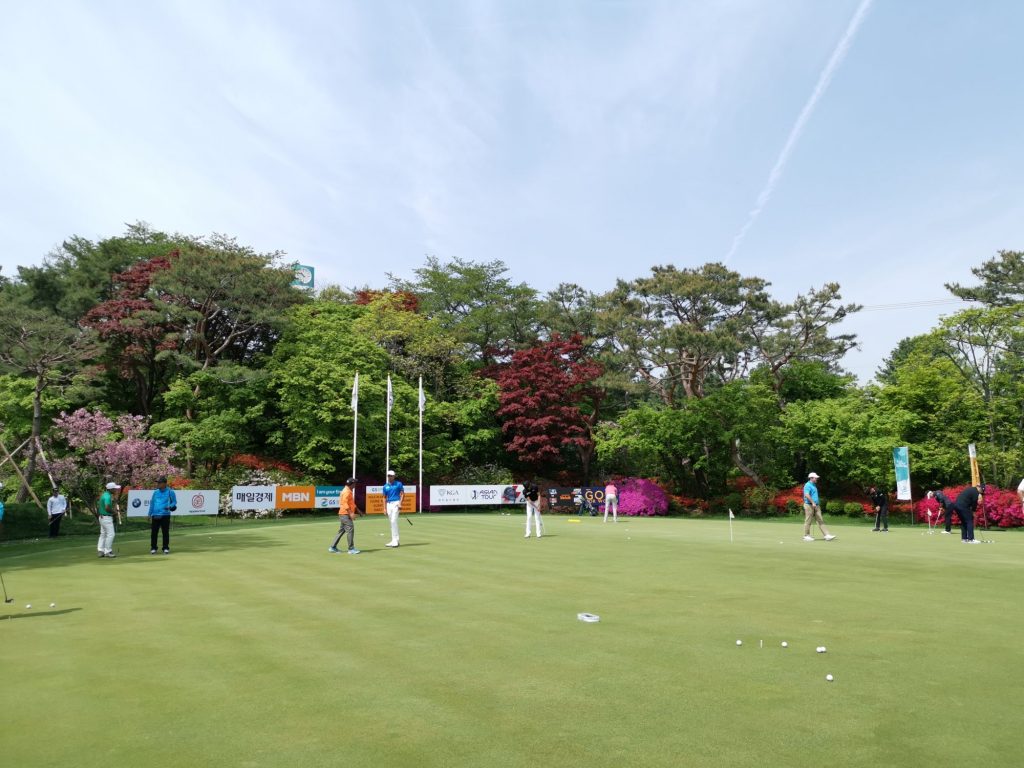By Olle Nordberg, Former Asian Tour and European Tour professional
A classic course in Asian professional golf, perhaps as memorable as Delhi Golf Club and Hong Kong Golf Club, although not necessarily similar in any way. But still an old-school Asian Tour course in every sense of the word. A course that everyone that played it back in the old days still talk about.
A beautifully landscaped course in the hills on the outskirts of Seoul, and on a nice clear spring-day you will have a great view of the surrounding suburbs from the hills above.
My first time playing the Maekyung at Namseoul was in 1995 on the old APGC Asian Circuit, and as was the case with Delhi Golf Club, my first visit there was also the scene of my best result in the tournament unfortunately. If my memory serves me correctly, I finished in a respectable 14th position that year.
Obviously, I was not a very good student of the game, or at least at adapting to different playing conditions, but don’t be fooled.
Namseoul is not overly long by modern standards, but it is a very strategic course, although maybe more deceptively so than some other courses.
By deceptive I mean that at first glance it is not very narrow, and the rough is not that thick (at least when you play it early in the spring when the Maekyung is always played), so you might feel like you can be a bit casual off the tee. That you can afford to be a bit imprecise with your drives or whatever you tee off with, and not focus properly on the shot at hand.
This would be a big mistake, and not because of what lies you might face in the rough, bunkers or trees awaiting a miscue with the tee-shot, the real problem will lie with your approach to the green from a less than ideal position.

The greens at Namseoul slope almost exclusively back-to-front, and some of them quite severely so. And they can be fast. Or very fast if you take the slope into consideration, coming from the wrong side of the hole.
Depending on how dry the weather is or has been, they can also be firm which is not an easy combination.
Control of approach shots is key, both when it comes to distance and direction. You will need very precise iron-shots into the greens in order to shoot good scores here. It is imperative that you place the ball within, say a 90-degree angle (or pie-shape) short of or below the hole, if you are going to be able to consistently have good opportunities to make putts.
Putts from above the hole or even some sidehill putts, will inevitably result in come-back attempts you wish you didn’t have. Even from normally makeable distances.
The advice here has always been, that it is often better to miss a green short than having a putt from the back of the green or wrong side of the hole. A chip or pitch uphill from short of the green is usually a much easier proposition for an up-and-down on these raised-up greens.
Elevation will also be a factor some holes, as the course is perhaps the hilliest on the Asian Tour schedule. On a few of the holes with very elevated greens like number 13, it can be difficult to keep the ball short of the hole even though most players will have no more than a wedge left for the second shot. The ball will be coming in on a flatter trajectory than usual because of the elevation, which will make it more difficult to stop it quickly.
The final hole is also playing quite severely uphill on the second shot, but the difficulty of the hole does not end there. The two-tiered green can be absolutely diabolical depending on where the pin is placed.
As with the rest of the greens it slopes acutely back to front, and with the added steep tier in the middle, it makes it much more difficult when pins are on the back portion as they usually are on the weekend.
Coming up a bit short and leaving the ball on the lower tier with your approach, you are facing a putt with the possibility of the ball coming back to your feet if you do not give it enough pace. Hit it too firmly and you could find yourself with a six-footer coming back down the hill, which if you miss the hole with in the come-back attempt, you could end up back down on the lower tier where you started. This has all been done in the past.
Miss the 18th green long with the approach, and you will need deft touch in order to keep your chip on the top plateau. Otherwise it will run all the way down to the front of the green, where you will be facing the scenario in the paragraph above.
All this makes for a potentially dramatic finishing hole, a two-shot swing on 18 is a very real possibility as we saw last year, and not only if one player makes a birdie.
The spectators will be out in full force on the weekend, and there could be thousands of people around the 18th green watching what I think is one of the most interesting finishing holes on the Asian Tour.




Recent Comments